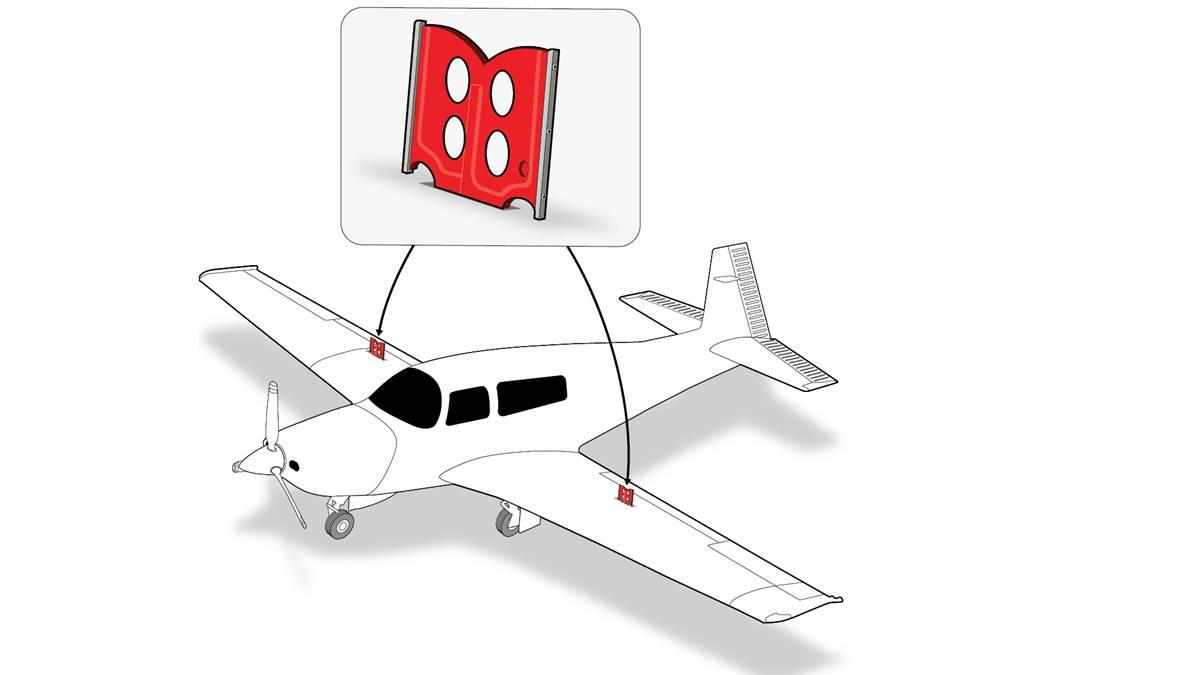How it Works: Speed brakes
How to stop on a dime, or at least a dollar

Illustration by Steve Karp
The answer is to stick something up in the air stream and increase drag. Even small devices only a few inches across can do the job. Speed brakes on a Mooney made by Precise Flight of Bend, Oregon, under the trade name SpeedBrakes are raised using a switch on the yoke that triggers a solenoid and activates electric motors to raise small, flat surfaces above the wing to form a tiny wall.
They don’t reduce lift the way spoilers do. Spoilers are those surfaces on the top of airliner wings that “spoil” lift as well as increase drag during descents and landing. They reduce lift on a small portion of the wing. Speed brakes affect only drag.
New to the airplane? Can’t get slow enough on downwind in your high-tech, 200-knot dream machine? Time to hit the speed brake switch to help slow the aircraft or increase descent—or both.



